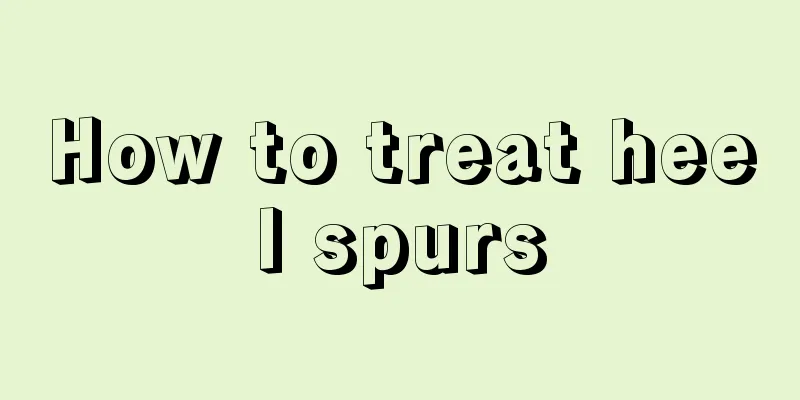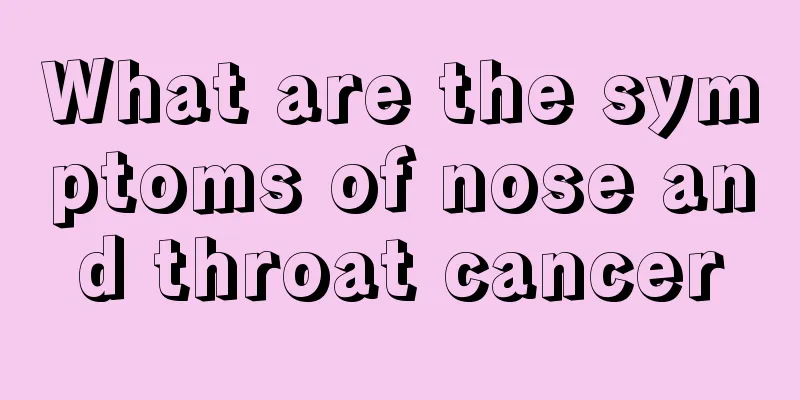How to treat heel spurs

|
We may have all seen cases of bone spurs on the heels, and bone spurs on the heel are more common in middle-aged and elderly people. There will be redness and swelling, and pain or numbness in the heels and soles of the feet, and even inability to walk. The first step in the morning is extremely painful, and the symptoms will be relieved after walking for a while. It is usually heavier in the morning and lighter in the afternoon. So let’s learn how to treat heel bone spurs! 1. Treatment methods 1. Other treatments Oral anti-inflammatory and analgesic drugs are generally used. This type of drug works by inhibiting local inflammatory responses, promoting tissue healing and relieving pain. Many patients feel upper abdominal discomfort after taking the medicine, which irritates the stomach greatly. Moreover, after stopping the medicine, many patients report that the pain recurs. Heel spur is a common and frequently occurring disease in orthopedics, and in severe cases it can affect one's life and work. The cause of heel spur is the contracture of the long plantar ligament and plantar fascia, which causes continuous traction injury at the attachment point of the calcaneus. The therapeutic mechanism of the micro-acupuncture knife is to peel off adhesions, unblock Qi and blood, loosen muscles, and relieve spasms and pain. The micro-acupuncture knife is used to loosen the tense and contracted muscles or ligaments at the site of the heel spur, and relieve the traction injury to the attachment point of the heel, thereby achieving the purpose of "looseness means no pain". Local closure with triamcinolone can reduce exudation, prevent adhesion, and relieve inflammation and pain. The two are used together to enhance the therapeutic effect. You can heat 150-250 ml of edible vinegar, boil it, and put it in a bowl or small plate (you can also put the vinegar in a bowl and slowly drip it onto a red-hot iron plate), use the rising steam to fumigate the heels, or use gauze soaked in hot vinegar to wash and apply it. If you add 30-60 mg of Clematis chinensis to vinegar, boil it and then use it for fumigation, the therapeutic effect will be better. Take twice a day, 6 days as a course of treatment. Generally speaking, surgical treatment should not be resorted to unless it is absolutely necessary, as bone hyperplasia can often regenerate. 2. Family Remedies In addition, patients with heel spurs should pay attention to home remedies in their daily lives: 1. Choose soft-soled shoes Choosing shoes with rubber soles is better for your feet (than leather ones). It is more important to dress comfortably than to dress well. Running shoes are a good choice. Avoid walking on hard surfaces such as concrete, wood, or non-carpeted floors. You can add pads on the heels to reduce pain. 2. Put foam cushion on the floor The cushion can reduce the pressure of bone hyperplasia on the surrounding area, and a hole can be dug at the corresponding position of the bone spur in the cushion. 3. External application If the pain is severe, you can apply a plaster to relieve the pain. 4. Foot bath Soaking your feet in hot and cold water alternately can help relieve symptoms, and massaging the soles of your feet with ice can also help. 5. Exercise selectively You can replace walking or jogging with cycling or swimming, which will achieve the purpose of exercise without hurting the affected foot. 6. Weight loss Being overweight is one of the causes of bone hyperplasia, so losing weight is urgent. 7. Foods to avoid Do not eat any orange fruits, especially tangerines and oranges. Also avoid sugar, alcohol, and coffee. These substances will hinder the recovery process and disrupt the mineral balance in the body. 8. Supplement nutrients ① Betaine hydrochloride Use according to product label. Helps calcium absorption. Elderly people are more susceptible to hydrochloric acid deficiency. Do not try this product if you have a history of ulcers or severe heartburn. ②Calcium and magnesium mixture Calcium 1500 mg per day and magnesium 750 mg per day. Maintaining a balance of calcium and magnesium will prevent abnormal calcium accumulation. ③Protease Dosage is as indicated on the product label. Helps with nutrient absorption and controls inflammation. ④ Vitamin C alpha bioflavonoids 2000~4000 mg of vitamin C per day and 100 mg of flavonoids per day. An anti-inflammatory agent that benefits collagen and connective tissue, helping to relieve pain. ⑤ Vitamin B complex with added vitamin B6 50-100 mg per day. Various B vitamins are most effective when taken together. Vitamin B6 is necessary for the production of hydrochloric acid. |
<<: There is a bone protruding from the heel
>>: What to do with clothes after a bone scan
Recommend
Why do I suffer from insomnia? What should I do if I always suffer from insomnia?
Insomnia makes many people feel very painful, espe...
The difference between fatty liver and alcoholic liver, it needs to be treated as soon as possible
Fatty liver and alcoholic liver are very common d...
Can bladder stones be misdiagnosed as bladder cancer?
Bladder stones and bladder cancer may have simila...
Precautions for male prostate cancer How to care for male prostate cancer
Life has taught us a lot, and we know that health...
Can skin cancer be cured
Can skin cancer be cured? Generally speaking, sur...
9 bad habits that will torture your liver
1. Lack of sleep Nowadays, many people have the h...
How to make the soles of shoes non-slip
Many middle-aged and elderly people like to wear ...
What are the ways to keep crabs alive longer?
Crab is a kind of seafood that is deeply loved by...
How long can you live if esophageal cancer recurs
How long can you live if esophageal cancer recurs...
How to deal with a sprained ankle
Sprained ankle is usually caused by cartilage dam...
Prostate tumor indicators
Prostate tumor index is not the disease grade or ...
What to do if blood oxygen content is low
The blood oxygen content is also known as the blo...
How to get rid of garlic smell in mouth
Nowadays, people's living standards are getti...
How long after laser freckle removal can I wash my face
After undergoing laser freckle removal, you canno...
What should you pay attention to with pancreatic cancer
What should you pay attention to with pancreatic ...









